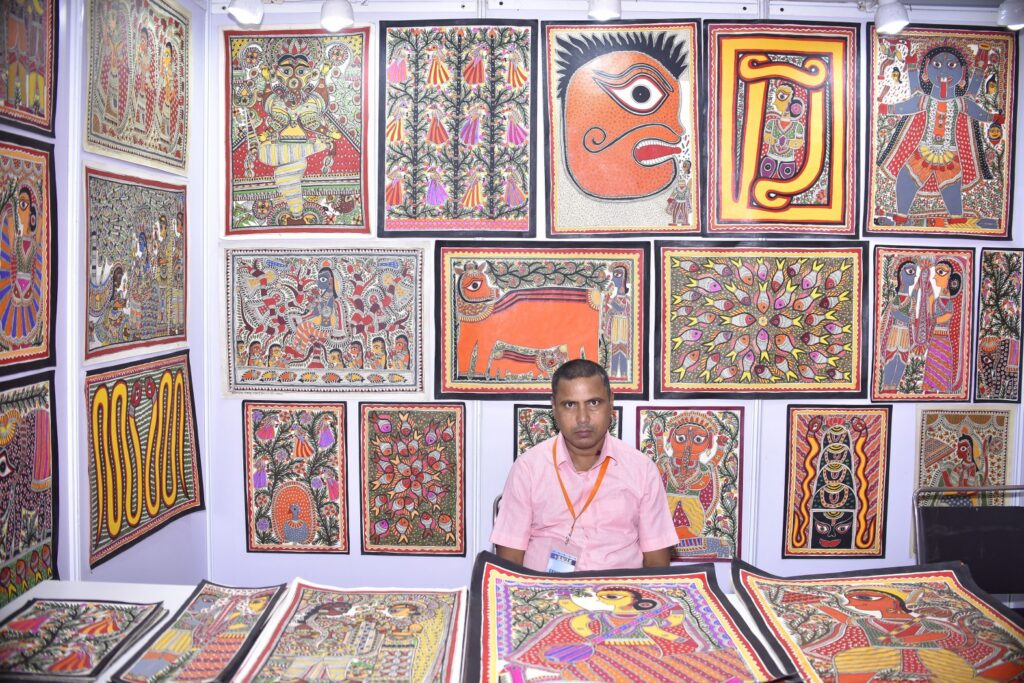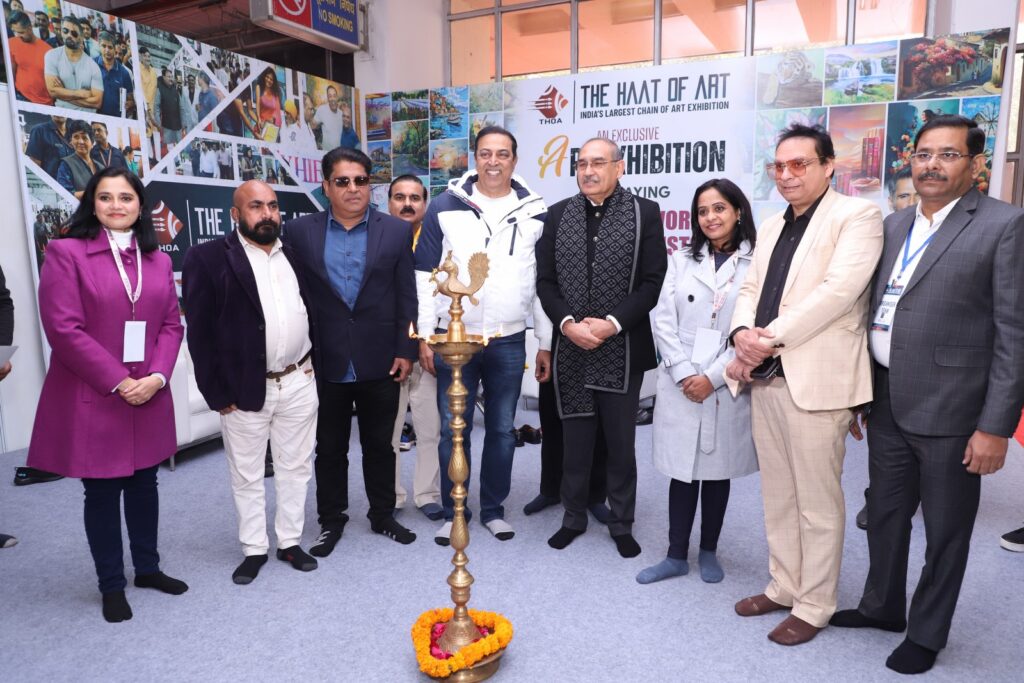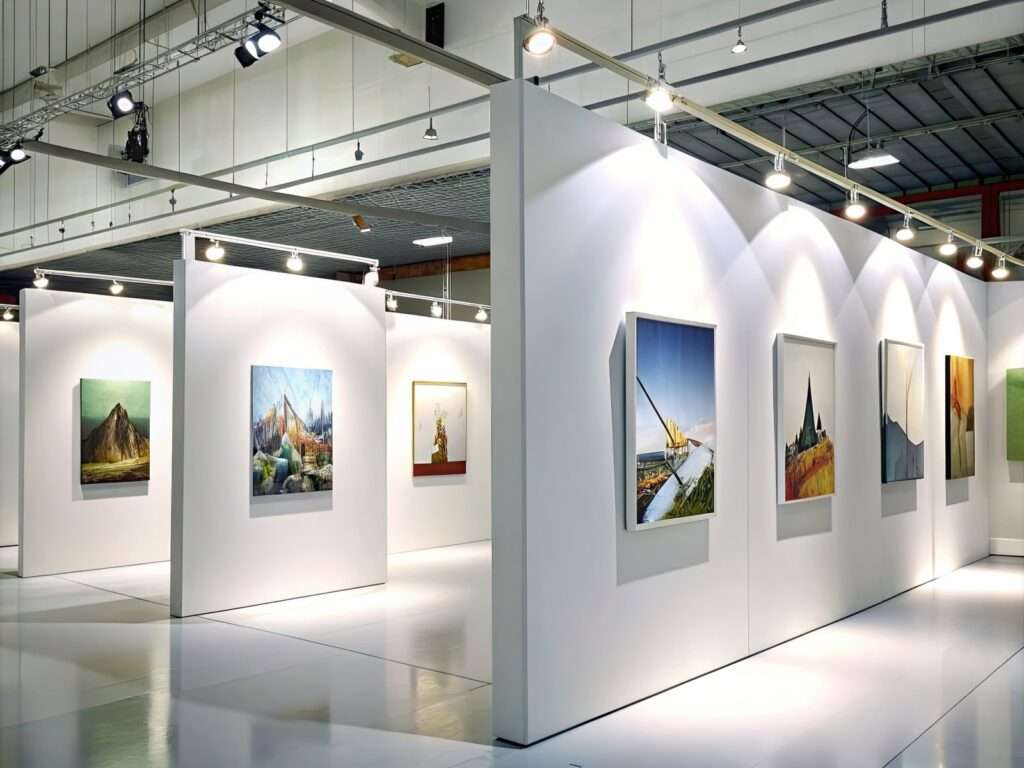Folk art is more than just creativity — it is a mirror of cultural heritage, passed down through generations. From Warli to Madhubani, Indian folk art captures rural life, festivals, and ancient traditions in every brushstroke. This October, you can experience this firsthand at The Haat of Art in Mumbai. In a world of digital art and mass production, folk art stands out for its raw beauty, authenticity, and connection to tradition. It tells the stories of ordinary people — farmers, villagers, nomads, and tribal communities — through vibrant colors, natural materials, and age-old techniques.
Whether it’s Warli from Maharashtra, Madhubani from Bihar, or Pattachitra from Odisha, Indian folk art carries deep cultural meaning, passed down through generations.

What Is Folk Art?
Folk art refers to traditional art created by local artisans, often without formal training. It’s deeply tied to daily life, beliefs, festivals, and nature. Each brushstroke or carving has a purpose — to preserve cultural identity and tell community stories.
Regional Folk Art Styles in India
- Madhubani Art – Mythological themes with bold colors and patterns
- Warli Painting – Simple, tribal depictions of rural life
- Gond Art – Dots and lines create symbolic stories
- Pattachitra – Scroll paintings from Odisha and Bengal
- Kalamkari Painting – Urban folk style with satire and storytelling
Here’s a deeper look at some regional art forms:
Madhubani (Bihar)
- Made using twigs and natural dyes
- Themes: mythology, fertility, nature
- Often painted on walls during festivals and weddings
Gond (Madhya Pradesh)
- Dot and line work, often animal-centric
- Tells tribal myths and local stories
- Symbolic use of trees, birds, and spirits
Warli (Maharashtra)
- Minimalist white figures on mud walls
- Depicts daily life, farming, and rituals
- Traditionally painted during weddings and harvests
Pattachitra (Odisha & Bengal)
- Intricate scroll paintings on cloth
- Focus on Hindu deities, especially Lord Jagannath
- Often used as temple offerings
Kalamkari (Andhra Pradesh)
- Painted with natural pens (kalam = pen)
- Uses vegetable dyes on cotton/silk
- Themes from Ramayana and Mahabharata
Why Folk Art Still Matters Today
Despite modern trends, folk art remains relevant because it’s:
- Sustainable – Often uses eco-friendly, natural materials
- Handmade – Supporting local craftsmanship and rural employment
- Authentic – Represents real culture, not commercial trends
- Story-driven – Preserves folklore, rituals, and oral history

Who Are the Folk Artists?
Folk artists are often:
- Self-taught or community-trained
- From tribal or rural regions
- Working with natural materials like clay, leaves, mud, cloth, bamboo, and dyes
- Living repositories of tradition, passing techniques down to their children
These artists rarely see the spotlight, which makes fairs like The Haat of Art so important — they give these creators a platform to earn, teach, and connect with a wider world
Why Events Like The Haat of Art Matter
Modernization has led to a decline in demand for traditional art forms. But events like The Haat of Art help by:
- Creating urban-rural connections
- Offering artisans direct income (no middlemen)
- Preserving dying art forms
- Raising awareness among youth and tourists
- Promoting handmade over machine-made
Experience Folk Art LIVE at The Haat of Art!
Want to see folk art come alive?
The Haat of Art is bringing India’s rich tribal and folk art traditions to the heart of Mumbai this October! Meet real artisans, buy handmade crafts, and immerse yourself in an explosion of colors, culture, and creativity.
Why You Should Visit:
- 100+ artisan stalls
- Live folk performances
- Tribal art workshops
- Handcrafted textiles, jewelry, home décor & more
- Great for families, students, and tourists!
Event Details:
- Venue: World Trade Center, Cuffe Parade, Mumbai
- Dates: October 10–12, 2025 (Friday to Sunday)
- Time: 11:00 AM – 8:00 PM
- Entry: FREE (Open to all – registration required)
- Register Here: Click to Register
- Website: The Haat of Art
Whether you’re a collector, culture lover, or just curious — this is your chance to connect with real Indian folk artists and support handmade art.
Final Thoughts
Folk art is more than a style — it’s a cultural voice. And in preserving it, we preserve who we are. So step into the world of folk art. Let it inspire you, ground you, and take you on a journey through India’s living traditions. Don’t miss The Haat of Art in Mumbai. Register now — it’s free!



